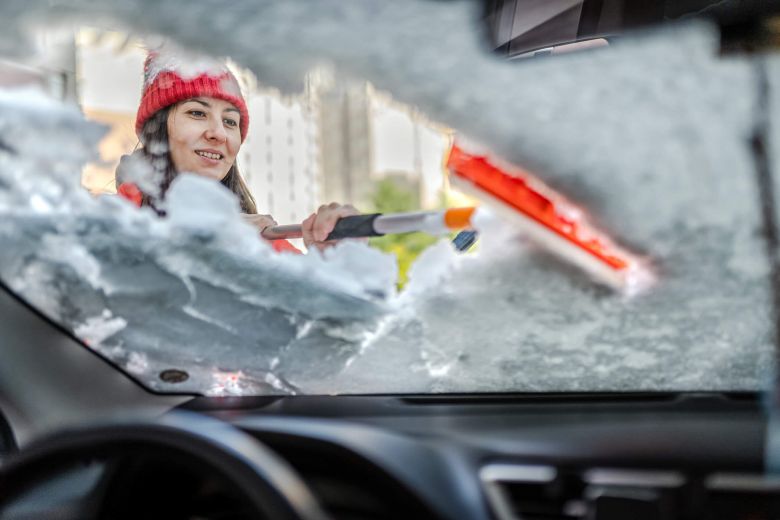Almost half of all UK motorists admit to not fully clearing their windscreen of snow and ice before driving off during winter months, according to a new nationwide survey commissioned by Autoglym.
In fact, 1,000 car owners across the UK were asked if they ever drive off before their windscreen is completely clear of snow and ice during winter months, and 48% answered yes (14% ‘yes, most of the time’, plus a further 34% ‘yes, sometimes’).
Knowing how to clear ice from your car is important for all drivers – and something that should be carried out before setting off on your next car journey.
However, the issue with incorrectly clearing ice from a windscreen is more prevalent among younger motorists.
The survey showed that 70% of those aged 25-34 saying they drive off before properly clearing ice or snow, compared to just 23% of those aged 64 and over.
All drivers should take action to remove all ice from their windscreen – and any other windows that are covered.
This is because section 41D of the Road Traffic Act 1988 makes it a legal requirement to have a clear view of the road ahead before you set off, which means the windscreen should be fully de-iced on the outside and thoroughly demisted on the inside.
Failure to do so could result in penalty points and a fine, as well as creating a significant risk of a collision with other road users.
The Highway Code also mentions clearing ice from a driver’s windscreen in Rule 229.
There are several items you can keep in your vehicle to help clear ice and snow from your vehicle.
These include an ice scraper, brush, and a de-ice spray. Another way to precent ice building up on a windscreen is by using a car cover – or windscreen and wingmirror covers.
However, some drivers have resorted to more unconventional – and less effective – solutions. In the same survey, consumers were asked: “What unusual methods have you ever used to clear ice or snow from your car windscreen in winter?” 38% admitted to using a credit or debit card to clear their windscreen; 36% said they have used their gloved or bare hands; and 17% said they use a kitchen implement such as a spatula.
Furthermore, 10% have used salt, 4% a book or magazine, and 2% said they have even used a mobile phone.
Another 4% stated they have used a range of other tools and techniques, which include scraping ice away with a piece of Lego or applying hand sanitiser to the glass.
An alarming 50% of 18- to 24-year-olds said they use boiling or hot water to melt the ice (compared to an average of 33%) – a method that results in a dramatic temperature change that can crack reinforced windscreen glass.
Avoid using these tactics – and stick to using an ice scraper and de-icer spray.
What do you make of the survey’s findings? Leave your comments below.

Complete peace of mind for less
• Cheaper than AA Price Promise or your money back^
• We get to most breakdowns in 60 mins or less
• Our patrols fix 4/5 breakdowns on the spot











